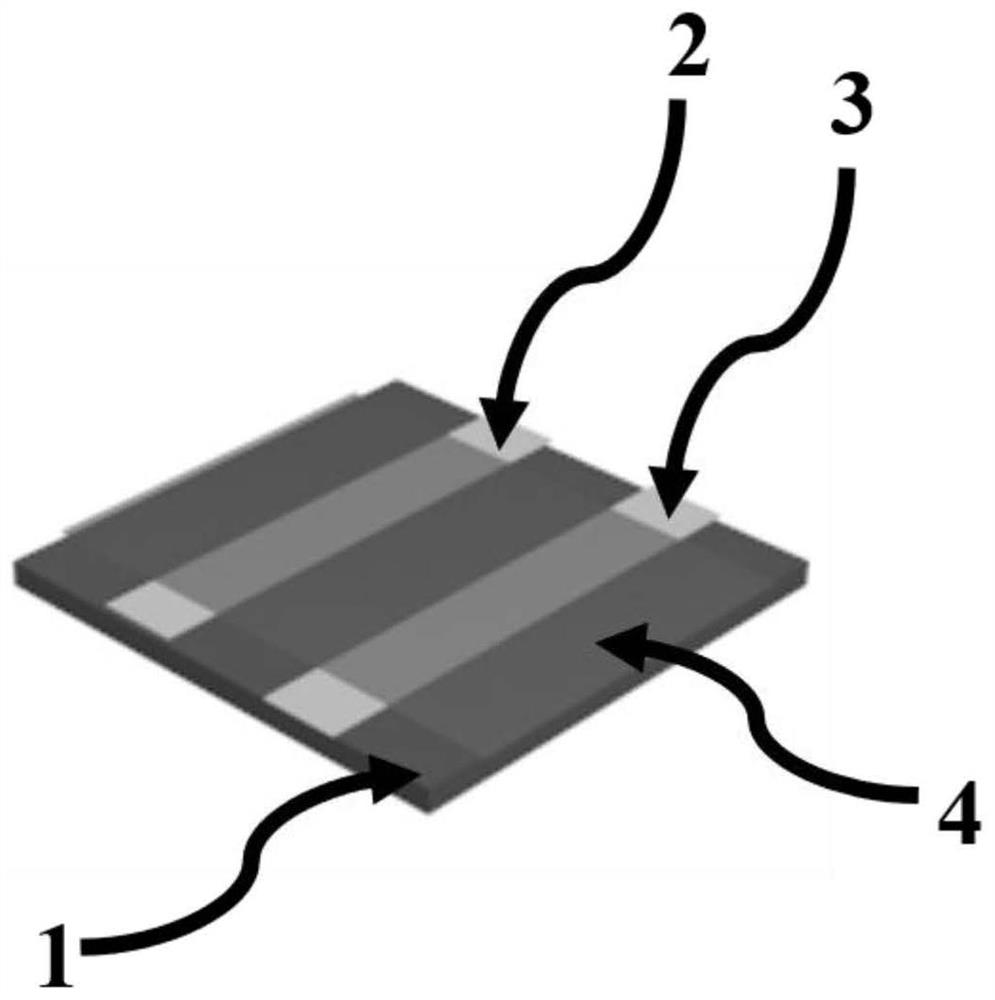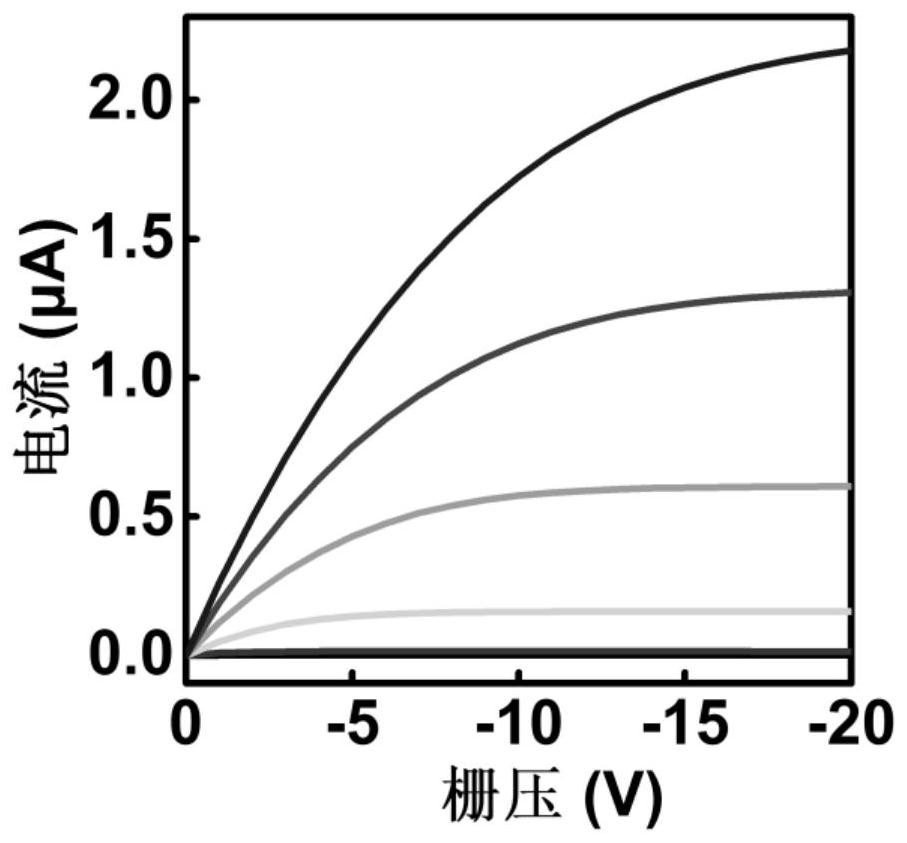Photoelectric biochemical sensor based on organic thin film field effect transistor as well as preparation method and application of photoelectric biochemical sensor
A field effect transistor and biochemical technology, applied in the field of biosensing, can solve the problems of cumbersome operation, increase the consumption of financial and material resources, etc., achieve good light response characteristics, reduce the consumption of financial resources and material resources, and good biocompatibility.
- Summary
- Abstract
- Description
- Claims
- Application Information
AI Technical Summary
Problems solved by technology
Method used
Image
Examples
Embodiment 1
[0062] like figure 1 Shown, a kind of photobiochemical sensor based on organic thin film field effect transistor, comprises: substrate, source electrode, drain electrode and organic semiconductor thin film, the substrate is the nitrogen-doped silicon substrate of 300nm silicon dioxide layer, organic semiconductor thin film is covered in On the substrate, a source electrode and a drain electrode are arranged between the organic semiconductor film and the substrate, the source electrode and the drain electrode are arranged in parallel, the source electrode and the drain electrode are made of gold, and the thickness is 30nm. Bulk type (D-A) organic polymer photoelectric active material, containing long alkyl chain D-A type organic polymer photoelectric active material is organic copolymer PDBT-co-TT, the absorption band of the organic semiconductor film is at 600-1000nm. The thickness of the organic semiconductor thin film was 40.73 nm.
[0063] The preparation method of organic...
Embodiment 2
[0065] The preparation method of photoelectric biochemical sensor in embodiment 1, comprises the following steps:
[0066] 1) Under an oxygen environment, treat the substrate with plasma for 10 minutes, then drop a silane coupling agent on the substrate, and keep it in a vacuum box at 120°C for 2 hours, wherein the silane coupling agent is octadecyltrichlorosilane ( OTS), every 1cm 2 Add 0.5 μL of silane coupling agent dropwise to the substrate, realize an oxygen environment through an oxygen flow of 20 sccm, and the rf power of the plasma is 100W;
[0067] 2) Paste a mask plate on the substrate obtained in step 1), then vapor-deposit a gold layer, remove the mask plate, form a source electrode and a drain electrode, and the W / L (width-to-length ratio) of the mask plate is 8;
[0068] 3) Spin-coat PDBT-co-TT, an organic polymer photoactive material containing long alkyl chain donor-acceptor type (D-A) organic polymer, on the substrate, at a spin-coating speed of 1500rpm, for ...
Embodiment 3
[0082] Because liver cancer is a common malignant tumor in my country, the mortality rate is increasing year by year, so the early diagnosis and treatment of liver cancer is particularly important. Alpha-fetoprotein antigen is the most specific disease marker and the main indicator for the diagnosis of liver cancer. Based on Example 3, the application of the photoelectric biochemical sensor of the present invention to the diagnosis of liver cancer is discussed.
[0083] Example 3
[0084] The application of photoelectric biochemical sensors in the detection of disease markers in embodiment 1, the method for detecting disease markers includes:
[0085] Step ①, drop 20 μL of probe solution on the photoelectric biochemical sensor, incubate at room temperature 20-25 °C for 1 h, wash the surface of the photo-biochemical sensor with 0.01×PBS for 3 times, dry at room temperature 20-25 °C for 2 seconds, and store in the dark. Test the I-t curve of the photoelectric biochemical senso...
PUM
| Property | Measurement | Unit |
|---|---|---|
| thickness | aaaaa | aaaaa |
| thickness | aaaaa | aaaaa |
| thickness | aaaaa | aaaaa |
Abstract
Description
Claims
Application Information
 Login to View More
Login to View More - R&D
- Intellectual Property
- Life Sciences
- Materials
- Tech Scout
- Unparalleled Data Quality
- Higher Quality Content
- 60% Fewer Hallucinations
Browse by: Latest US Patents, China's latest patents, Technical Efficacy Thesaurus, Application Domain, Technology Topic, Popular Technical Reports.
© 2025 PatSnap. All rights reserved.Legal|Privacy policy|Modern Slavery Act Transparency Statement|Sitemap|About US| Contact US: help@patsnap.com



